Do's and Don'ts When Ordering Metal Roofing for a Project - PODCAST TRANSCRIPT
February 29, 2024 at 12:00 p.m.Editor's note: The following is the transcript of a live interview with Erik Hillhouse of ASC Building Products You can read the interview below or listen to the full episode.
Intro: Welcome to Roofing Road Trips, the podcast that takes you on a thrilling journey across the world of roofing. From fascinating interviews with roofing experts, to on the road adventures, we'll uncover the stories, innovations and challenges that shape the rooftops over our heads. So fasten your seat belts and join us as we embark on this exciting roofing road trip.
Karen Edwards: Hello and welcome to another Roofing Road Trips from Roofer's Coffee Shop. I'm your guest host Karen Edwards, and today I am really excited to welcome the team from ASC Building Products, Richard King and Erik Hillhouse. We're going to talk all about navigating the procurement of metal roofing products. So welcome guys. It's great to see you. Thank you. Hi, welcome. Well, let's get started with some introductions. Erik, why don't you introduce yourself and tell us a little bit about your background.
Erik Hillhouse: My name is Erik Hillhouse. I've been with ASC for around six, six and a half years or so. I've been in the building supply industry for about 25 years. Metal, I'm the newest to, but that's still like seven years of experience, so I've seen quite a bit.
Karen Edwards: Sure. And forgive if I missed hearing this, what do you do? What's your role at ASC?
Erik Hillhouse: I'm actually a sales rep for ASC.
Karen Edwards: Excellent. Okay. So-
Erik Hillhouse: I cover a lot of the warmer territories, Southern California, Arizona, Nevada.
Karen Edwards: Nice. All right. Well, it's nice to have you here. And Richard, please introduce yourself.
Richard King: Yeah, I'm the marketing manager for ASC Building Products, and so try to curate lots of knowledge about what's going on in the metal roofing industry to help our customers and contractors and the like. And I've been in the industry for about 10 years.
Karen Edwards: And for those who might not know, please tell us what ASC building products is and what you guys do.
Richard King: Yeah, absolutely. So ASC Building Products is a West Coast based manufacturer of metal roofing and siding. We've been in business not under the ASC building products, but under an ASC Pacific and other names for over 50 years. So quite a trusted company. And so we manufacture a range of products from standing seam metal roofing to corrugated metal siding, and we also make all the trim accessories and everything like that for a metal roofing project and supply fasteners and our high quality products distributed throughout the western states our distributor network.
Karen Edwards: Okay, excellent. Well, I'm excited to talk all about metal and procuring metal because we were chatting a little bit before we started this recording and we went through a really bad material shortage back in 2021. And I'm curious, what are you seeing now in terms of availability for metal in construction.
Richard King: Yeah. I'll go first on this one, at least from my perspective, I think we've gotten through some of the issues we faced during Covid as everyone was looking to roof all at once. But we still see things can be color specific and there's kind of trends in colors which shoot up, which can hit supply chain snags.
I think the other thing that you really touched on, a big issue with metal roofing is, so this is a made to order product. And when you think about most of the other building materials and roofing materials out there where they're kind of made to stock and you can pull off the shelf, not the case with metal roofing. And so a lot of that lead time is for that manufacturer to make it specific to your project. That can also be a big source of the bumpiness in the supply chain. And as we were touching on our chat before this call, the really sad incident in Baltimore this morning really does have that opportunity to disrupt supply chains again. So things were looking better and improving, but who knows from here? I don't know what you've seen, Erik.
Erik Hillhouse: Yeah. No, same thing. We had issues with some of the closures with the ports, or not closures, but Covid caused quite a slowdown with ports.
Karen Edwards: Yeah, the backups, the trucks waiting to get into the ports. Yeah. Yeah.
Erik Hillhouse: Yeah. As well as some other supply chain issues. But for the most part, we've seen a lot of that alleviated. And again, as Richard alluded to, some colors are still so popular that they're flying off the shelf and we're just trying to keep up.
Karen Edwards: Yeah. Yeah. So let's talk a little bit about that. We didn't chat ahead of time, but the popularity of metal, especially in roofing, it is just going through the roof. That was not intentional, but I made myself laugh. Yeah. So why do you think that is? What are you seeing? And if you have thoughts on that increase in popularity, I'd love to hear it.
Erik Hillhouse: Sure. Well, I believe a lot of it boils down to the advantages of metal over composite or even tile. You have way more design possibilities where we average, at least on the residential side, you're looking at 13 to 20 different panel designs that you can play with in multiple colors versus just having a handful of shingles or a handful of tile styles and colors.
Also, we meet, see cool roof type applications where our panels distribute heat better and don't absorb heat like a tile will or a composite shingle will. Therefore, you're looking at lower cooling costs in the summer. You're looking at advantages of longevity. I mean, you're looking at a roof that lasts 60 to 70 years if you're taking care of it, whereas with a composite roof, you are looking at replacing it two to three times in that lifespan.
Karen Edwards: What about, you mentioned the cooler roof, the reflectivity, but there's sustainability benefits to metal as well, right?
Erik Hillhouse: Absolutely. Yeah, it's fully recyclable versus something that's going to enter the waste chain. You're not going to find it in a landfill anywhere. It can be fully recycled.
Karen Edwards: That's fantastic. I know that's really important to a lot of building owners and homeowners, especially as we see the next generation of owners coming in to play. That stuff matters.
Erik Hillhouse: Yeah. It's also like the greatest substrate for if you're looking to go solar. Metal roofing is the way to go. It's the easiest substrate to attach solar to.
Karen Edwards: Yeah, because you don't want to have to take the solar panels off in 20 years when you need a new roof. You want that longevity of metal.
Erik Hillhouse: Right.
Karen Edwards: Yeah, definitely.
Richard King: Yeah.
Karen Edwards: All right. So... Oh, go ahead.
Richard King: I just want to quickly say, just to Erik's point, I think that change in popularity, the aesthetic metal roofing is becoming a lot more integrated into modern design, but also that resiliency part. I think we're seeing a real shift in people looking ahead instead of just seeing a roof as something you do every 15 years, people looking at, well, let's look a bit of a longer timeframe than that. And then all of the environmental factors like wildfire season or crazy snow or wind and all the, we're seeing this kind of increase in the frequency of all these wild weather events of which metal is very suited for. So people making some more considered long-term decisions, which I think is really impacting that demand.
Erik Hillhouse: For sure.
Karen Edwards: Yeah. Okay. So as contractors are looking to procure metal for their roofing projects or siding or whatever that project might be, what should they take into consideration to say guarantee success, but guarantee is a strong word. I know legal departments don't always like that, but to ensure a successful experience or their lead times to consider, what are those tips that you can share?
Erik Hillhouse: I would say the biggest difference is detail, detail, detail. Some of the things that you can take for granted with other materials where I can just order another panel or another palette or something like that. You cannot do that with metal. Things like pitch are critical. Things like knowing what is the roof dimension, not just the dimension of the building. We will have contractors call up and say, "Yeah, I have a 20 by 20 building, can I get a roof for that?" And it's like, well, we kind of need a little more information than that.
In the composite world, composite roofing world, you can kind of come in and go, "Hey, I need a per square price," or something like that. Whereas with metal, it is, as Richard alluded to, it is a custom-made product. So when you walk in the door, things like the pitch, the measurement, the color, if you look at our brochures, you would be amazed how many times people will walk in and go, "I want this panel in this color." Well, this panel isn't actually in this color and none of that was verified. They have custom trims where they'll walk in the door and go, "I want this in this shape, but I can't tell you how long or short this is or what angle this is." Well, again, it's such a specialized product that you have to know those details.
Karen Edwards: There's not as much forgiveness, I guess.
Erik Hillhouse: Not at all. And even if you're looking at services like takeoff services where we have a team of people, great team of people here who will take a set of your plans and do a roof takeoff and tell you, we will build that list of materials, everything that you need to do that roof. But once we send it to you, the first thing we're going to say is, you need to go out and verify that these measurements were correct because we've had instances where something happened in the field and the house is not exactly to the specs that they sent us. And now the panels are four inches short, and you can make up for longer, but you can't make up for shorter.
Karen Edwards: Right. Yeah. Yeah. So, I'm glad you mentioned that because I was going to say, when you're talking about the details and they have to be right and you have to know the pitch and you have to know the exact measurements, that can be a little daunting, right?
Erik Hillhouse: Sure.
Karen Edwards: So as a contractor, I'm like, "Eek." Especially if this is one of my first metal jobs, I don't want to screw it up and get hit in the pocketbook.
Erik Hillhouse: Absolutely.
Karen Edwards: But it sounds like you have a really good support to help through that process.
Erik Hillhouse: Absolutely yes. Yeah. I mean, we have whole team, again from Richard's team to the sales team where we all consult each other and we put together the tools needed from the visualizer on our website so you can see what it's going to look like all the way to, here's a handwritten order sheet that goes through every part and piece that you would need if you're going to do it that way.
Karen Edwards: Okay. So the visualizer is probably a very useful tool for contractors to use-
Erik Hillhouse: Mm-hmm. And homeowners.
Karen Edwards: ... During that sales presentation with the homeowners even, or the homeowners ahead of time. Richard, you're the marketing guy, you must love that?
Richard King: Yeah. No, I love our visualizer. It's got a couple of pretty cool functionalities. So you can just use a standard image where from a library of homes that look like your home, you can put it on, or there's now this new AI masking tool. So basically, you just take your camera phone, stand outside the front of your house, take a photo front on and then within a couple of minutes you can be visualizing a new metal roof of whatever product or color on your home. But we even have a third tier, which is called design services, where you submit your address and they'll create a 3D model of your home and then you can visualize the way the metal goes on that. And it also actually prepares as well what's called an Eagle View Report, which is a high level measurement of the roof surface. Now, as Erik said, you can't rely on that as a measurement of the roof surface, but that can be the first step in terms of estimating what the size of the job will be before having to need to actually measure all those individual elements.
And I think the one thing I'd like to just quickly touch on too, that Erik was talking about the complexities of metal, which sometimes what I don't think a lot of people new to it understand is that metal pricing and panels, all of even the painted metal panels for metal roofing, it's all tied to kind of a commodity steel price index, which is really based upon supply and demand and things like that. So as a result, the pricing of metal can have waves of fluctuation, which is due to what's going on to the industry as a whole. So, staying abreast of trends and being aware that the pricing of metal may change throughout that quoting cycle is really important as well too.
Karen Edwards: That is very important because as a contractor, you kind of have to protect yourself. If you think that in 45 days there's going to be a price fluctuation and you're quoting that job, you're probably going to want to say, "Hey, this quote's only good until a certain date." Do you see a lot of-
Erik Hillhouse: Yeah. We do the same thing.
Karen Edwards: Yeah.
Erik Hillhouse: Yeah. We do the same thing because I mean, we try to be proactive with pricing, and if you remember 2020, 2021, the demand for steel went through the roof and the supply of steel was very short. And as a result, pricing changed weekly, it felt like. But a lot of that turmoil has come down, so we are able to stay on top of pricing and let the contractor, or I'm sorry, our supplier know ahead of time. We still book it out for 30 days, but it's more of a let's review this in 30 days, is your homeowner still interested? Can we honor that?
Karen Edwards: Oh, yeah. Yeah, that's really important. We are talking a lot about challenges for contractors, things to be aware of and we talked about how you help with the takeoff, you help with the project and putting a system together. Do you help with training? What does that look like for a contractor to learn the proper way to install that roof?
Erik Hillhouse: Yes. With installation, I mean we have a ton of installation resources, from the installation manuals that you can download off the website to, we have these fantastic videos that will take you step by step and walk you through from a general three-foot panel to a skyline standing seam panel to just about everything is covered there. And as well as we have internal resources with, we have a tech team, Jeff Haddock, who will assist us with installation and join calls with us. If the customer is really struggling and has a lot of questions, we'll put them together.
Karen Edwards: Nice.
Richard King: And I think a big part there is always still kind complexity and experience. Metal's, not something that you can go into and expect to do a standing seam roof properly on your first, because the panels themselves are... Yeah. I'm simplifying again, not too complex, but it's all the trim details and making sure that that system that the contractor puts together is watertight and weatherproof is the most important thing. And so I think a lot of the recommendation is start with the simpler products or a simpler design where it's maybe siding or a single pitch roof and then work your way up in experience so that you do or shadow an experienced installer so that when you're installing it, you're doing it correctly. Because as we talked about, it's a fantastic product when installed correctly, but it's not a forgiving product when installed incorrectly.
Karen Edwards: Right.
Erik Hillhouse: And if you haven't used it before, there's little details that you don't know starting a quarter inch from the edge, having a one-inch overhang near your eaves. These are little details that you have to take into account.
Karen Edwards: Wow. So, start with the dog house, right?
Erik Hillhouse: Yeah, absolutely. Or a shed or-
Karen Edwards: Or a dollhouse, or the kids toy fort in the backyard?
Erik Hillhouse: Yeah.
Karen Edwards: Where it doesn't matter so much. But yeah, that's true. The tips and tricks from the years of experience really do matter.
Erik Hillhouse: Absolutely.
Karen Edwards: Yeah. So tell me a little bit about the types of warranties that contractors are able to offer when they're using your metals on the roof.
Erik Hillhouse: Those are broken down by paint system. We deal with three primary paint systems. An SMP, a PDVF, SMP is a polyester paint system that comes with a 25-year warranty all the way up to Kynar BT 5000 system, which is a limited lifetime warranty, on a residential application. So you're looking at paint systems that will basically be guaranteed for life. Now there's some stipulations to that.
Karen Edwards: Right.
Erik Hillhouse: But we're warranting against chalk and fade. Now, if an act of God happens and a tree goes through your roof, we do not warranty that.
Karen Edwards: No. Yeah.
Erik Hillhouse: Basically, the warranty is primarily on the finish and the finish only.
Richard King: Yeah. And an important consideration of the warranty. I mean, what that's really drilling into is that that metal roof will continue to look good throughout its lifespan. And that's a really big important consideration when selecting a supplier. Because often with a metal product, when it's brand new, a low quality product will almost look the same as a high quality product. Because say it's bright red or something, but it's actually how that ages over time, which is when there's a lot of issues and if it fades too fast so that you lose that color too quickly or it fades inconsistently so that you've got these splotches of colors or if the coating starts chipping off because it's not suited to the environment.
And so a lot of that finish warranty that we offer is talking about that consistency and then as a reputable supplier, if something is to go wrong that we support our warranties. So, definitely looking at the warranties is an important thing. And really that big delineation in terms of the warranty that's offered will come down to the paint system. So as Erik alluded to, there's three general tiers in metal roofing and the more expensive, the better warranty coverage and the more extreme environments. But all of this is very product specific and just worth looking at manufacturer websites like our own, which will go into the details. Warranty specific to the color and products.
Karen Edwards: Oh, sure because when that-
Erik Hillhouse: And environment. And environment, you have to be careful there too.
Karen Edwards: Oh, yeah.
Erik Hillhouse: So, anyone living on the coast or near saltwater, that's a completely different specialty pain system. So, you have to keep that in mind.
Karen Edwards: Yeah. As soon as any kind of fading or deterioration or discoloration starts to happen, the person that's getting the first call is probably the contractor.
Erik Hillhouse: Correct.
Karen Edwards: Right?
Erik Hillhouse: Yeah.
Karen Edwards: Yeah. And they don't want that headache. So, I think by you providing that information and that guidance to the contractor, they say location is everything and you just mentioned coastal or where they're more susceptible to wildfires, it's going to make a difference.
Erik Hillhouse: Absolutely.
Karen Edwards: But how does a contractor know, I mean, I guess just over the years of experience, but how do you help them determine what the right type of metal or warranty might be for a certain property? Will you help them through that process?
Erik Hillhouse: To a certain extent, yes. I mean, most of what we're going to reference is a DTXL system, which is a lifetime system. It is probably the single most popular paint system we sell. That and if I'm looking at the most popular panel that we sell, it's Skyline. So it's a standing seam panel, and that's the standard paint system that comes on it. Basically, what we'll do is we'll have a conversation with that contractor, what are they looking for, what's the homeowner looking for? And we're going to take more of a listen-than-speak approach to that, because a lot of this boils down to the aesthetics. What does the homeowner want it to look like? And we'll point them in the right directions from that.
Richard King: And to the previous point, a lot of those kind of environmental cases are really the exception rather than the norm. Metal roofing works in so many situations. It's really those highly corrosive environments like certain coastal regions or if you're exposed to industrial gases or things like that. So those things that are just going to really attack the finish, which is where it's worth reaching out to your manufacturer in advance, that offers two benefits. Often is they'll, if that kind of roof gets installed in the wrong environment ahead of time, there's exclusions in the warranty which say, "Oh, it can't be installed in certain proximity to it." So if you contact in advance, there's a lot more options in terms of getting the right paint system for that environment and getting it specific to that environment so that you do get warranty coverage and it's suitable.
And again, it's that exception of an environment and even coastal environments can kind of vary. Like in Pacific Northwest where there's lots of rainfall, rinsing that roof is a lot more calm in compared to say, Southern California where a lot of breaking surf and salt and also not a lot of rainfall to rinse it. So it's really just if the contractor's thinking, "Oh, this is probably a bit of an extreme environment, I think I should call the manufacturer in advance so I can have the appropriate discussion in advance."
Karen Edwards: Okay. I'm curious too because you mentioned earlier when we were talking about material supplies and shortages and be being able to procure what you want that sometimes it can be related to color, but then you mentioned, are there different colors that have different warranties and only these warranties are available and only these colors? How does that work? Curve ball, sorry.
Erik Hillhouse: No, no. I'm trying to think. So, really SMP paint system, which is the lowest warranty, that's a 20 year warranty. And again, I'm speaking residentially, not commercially. Most of those colors, in fact, all of those colors except for one, come in the other paint systems as well. You do have that consumer that's looking to build a small shop in the back 40 and doesn't want the most durable that they can get. And so that's who that's targeted to. But basically, again, that would be part of that, what are they looking for? What kind of facility is the consumer building and what kind of environment is it in as well as how long are they looking for it to last?
Richard King: Yeah. On the old, paint systems generally won't really vary that coverage by the color. It's really by the paint system. But when you think about it, when you look at a color palette for metal roofing, most of them, while it's a broad range, you won't see really bright and vibrant colors. Think of, A, who wants to put a bright yellow roof or a bright hot pink roof. But generally those really bright colors use what's called organic pigments, which fade a lot faster. So also the colors that are selected by metal roofing manufacturers are those which have been optimized for that cool roofing efficiency that Erik was talking about, as well as colors that'll last a long time and not see excessive color fade or anything like that.
So, it's kind of a little bit of both. And then we are getting more on the commercial side, sometimes for extreme applications such as a specific brand's hero color or things like that, there are custom add-ons which they can add to a paint system to warranty a really bright color, but that's outside of the realm of what most residential and commercial contractors need to think about.
Karen Edwards: Sure. Yeah. Well, it's interesting that you mentioned commercial because we have mentioned residential, and I was just curious what you guys are seeing in terms of the commercial. Are you seeing metal being used more on commercial projects or on commercial re-roofs?
Erik Hillhouse: Yes. Metal is very popular in commercial, again, due to that durability, due to the availability of the different profiles. I mean, if you are looking at the BP side, the building product side or the residential side, you're probably again looking at 13 to 15 different profiles. And then on the commercial side, you're looking at 20 more-
Karen Edwards: Oh, wow.
Erik Hillhouse: Maybe a little more than that, 25 more. So, we offer a pretty deep product offering that can pretty much enhance any need that you have or match something that you currently have to re-roof
Karen Edwards: Gotcha. So I'm a contractor and I want to start doing metal, how do you help me and what do I do?
Erik Hillhouse: The first thing I would point you to is the website. And I would start with installation, how comfortable are you with installation? Let's go through it and again, send the links to the videos and we'd start there and we would go, "Hey, sit down and watch this. And then let's do a discussion afterwards," and move forward from there. How comfortable are they? And then have them compile a list of what kind of questions that they have and then go through their questions with them. And if it's too technical for me and again, I use those resources inside and make a phone call and say, "Hey, help me."
Karen Edwards: Right, right.
Erik Hillhouse: And we have a great network of people who've, our native knowledge within ASC is just through the roof. I mean, the average rep here has been here for 30 plus years.
Karen Edwards: Wow.
Erik Hillhouse: So, they've been doing, and some of them before they came here, they were doing it for 10 years somewhere else.
Karen Edwards: Right.
Erik Hillhouse: And so, we have a ton of native knowledge that we have access to.
Karen Edwards: Excellent. I mean, at the end of the day, everyone wants a roof that is high-performing, watertight, it's aesthetically pleasing and it does what it's supposed to do, right?
Erik Hillhouse: Yeah.
Karen Edwards: And so, you want the contractor to have that knowledge and know how to install it correctly because you don't want to look bad. He doesn't want to look bad, and everybody wants the roof and the building to be dry. So it's kind of a win-win for everybody.
Richard King: Yeah.
Erik Hillhouse: Absolutely.
Richard King: I think that goes back to Erik's earlier point. I mean, we really love having that discussion with the contractor because we want that, when they submit that job list, that's exactly what that job needs and it looks great.
Erik Hillhouse: Absolutely.
Richard King: Because rectifying a job after the fact if a measurement is off, or if the trim has been designed for the wrong roof pitch, or you haven't ordered enough material for a job and then scrambling to get leftover, we don't want anything like that. And I'm sure for the contractor, that makes their experience with the homeowner worse as well. So it's kind of, by all being aligned in advance and having that relationship and knowledge sharing in advance, there's a lot more success that can be developed by the contractor in the future.
Erik Hillhouse: Absolutely.
Karen Edwards: Excellent. Well, Erik, Richard, this was really informative today. I hope that we have given our listeners some nuggets. I always say, if you can take away a couple of nuggets from the conversation, then we're all happy. Thank you for being here today and for sharing your knowledge and the information about ASC Building Products. You guys do have a full directory on rooferscoffeeshop.com. So for our listeners, you can find them there or you can visit the website, which is...
Richard King: www.ascbp.com and I'd quickly call out at the top of that, we have an easy to access form called Ask ASC Building Products, so if you have any questions, chances are Erik may answer some of them because he's great with our contractor base. So if you've got any questions at all about metal, we're right there to answer them.
Erik Hillhouse: Absolutely. Yeah.
Richard King: So, definitely use that form.
Karen Edwards: Excellent. All right, well as always, we want everyone to listen to all of our podcasts so you can stay on top of the latest news and happenings in the roofing industry. So be sure to visit rooferscoffeeshop.com, check out our read, listen, watch initiative. That's where you'll find all of our podcasts, or you can listen and subscribe on your favorite podcast platform. We appreciate you being here, and we'll see you next time.
Erik Hillhouse: Thank you.
Richard King: Thank you.
Outro: If you've enjoyed the ride, don't forget to hit that subscribe button and join us on every roofing adventure. Make sure to visit rooferscoffeeshop.com to learn more. Thanks for tuning in, and we'll catch you on the next Roofing Road trip.




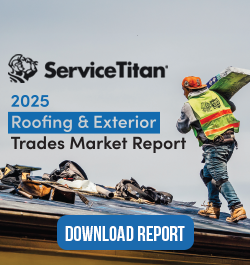
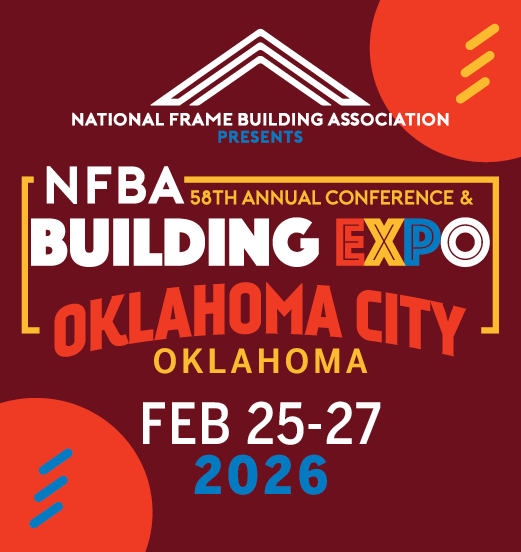



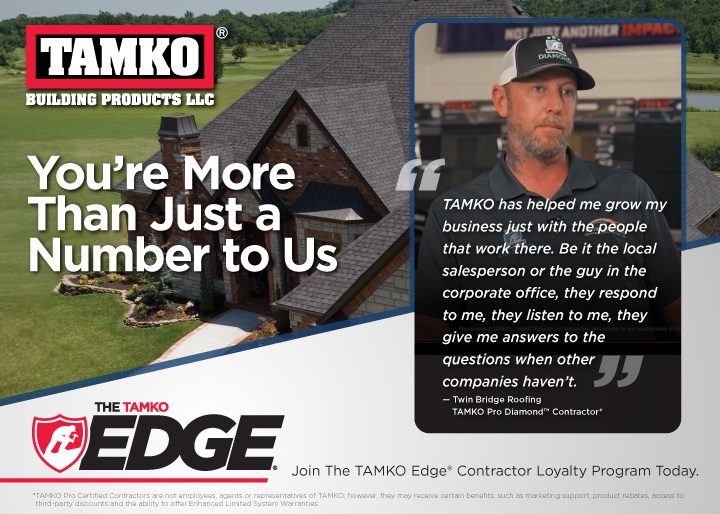



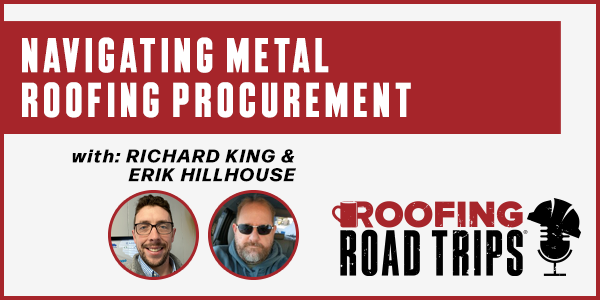


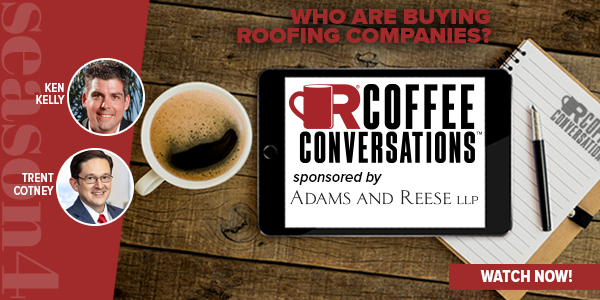






Comments
Leave a Reply
Have an account? Login to leave a comment!
Sign In